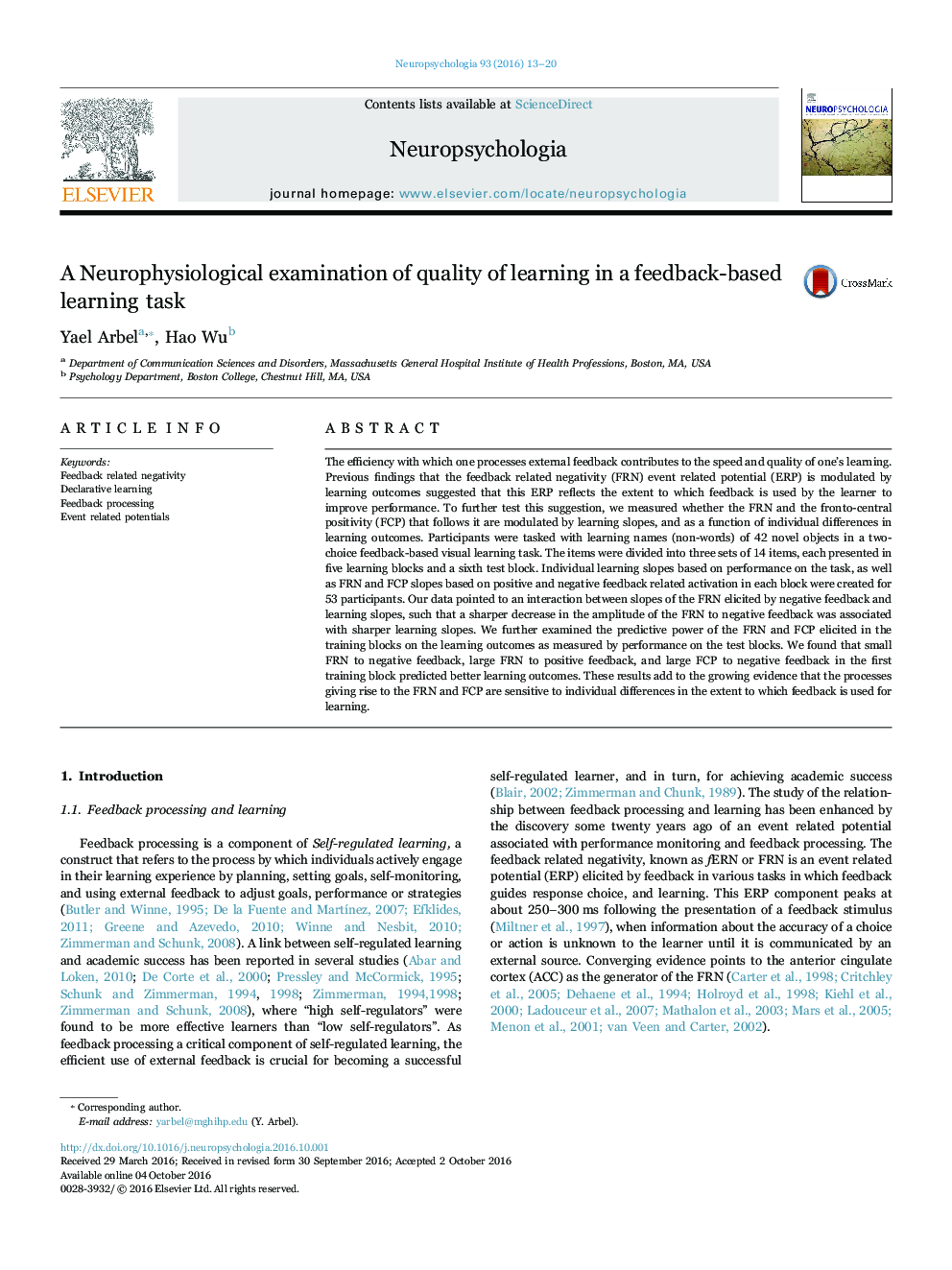| کد مقاله | کد نشریه | سال انتشار | مقاله انگلیسی | نسخه تمام متن |
|---|---|---|---|---|
| 5045310 | 1370661 | 2016 | 8 صفحه PDF | دانلود رایگان |
- Steeper reduction in FRN to negative feedback was associated with faster learning.
- Changes in FCP amplitude were not found related to individual learning slopes.
- FRN in the first block of trials predicted learning outcomes.
- Smaller FRN to negative feedback was associated with better learning outcomes.
- Larger FRN to positive feedback was associated with better learning outcomes.
- FCP in the first block of trials predicted learning outcomes.
- Larger FCP to negative feedback was associated with better learning outcomes.
The efficiency with which one processes external feedback contributes to the speed and quality of one's learning. Previous findings that the feedback related negativity (FRN) event related potential (ERP) is modulated by learning outcomes suggested that this ERP reflects the extent to which feedback is used by the learner to improve performance. To further test this suggestion, we measured whether the FRN and the fronto-central positivity (FCP) that follows it are modulated by learning slopes, and as a function of individual differences in learning outcomes. Participants were tasked with learning names (non-words) of 42 novel objects in a two-choice feedback-based visual learning task. The items were divided into three sets of 14 items, each presented in five learning blocks and a sixth test block. Individual learning slopes based on performance on the task, as well as FRN and FCP slopes based on positive and negative feedback related activation in each block were created for 53 participants. Our data pointed to an interaction between slopes of the FRN elicited by negative feedback and learning slopes, such that a sharper decrease in the amplitude of the FRN to negative feedback was associated with sharper learning slopes. We further examined the predictive power of the FRN and FCP elicited in the training blocks on the learning outcomes as measured by performance on the test blocks. We found that small FRN to negative feedback, large FRN to positive feedback, and large FCP to negative feedback in the first training block predicted better learning outcomes. These results add to the growing evidence that the processes giving rise to the FRN and FCP are sensitive to individual differences in the extent to which feedback is used for learning.
Journal: Neuropsychologia - Volume 93, Part A, December 2016, Pages 13-20
